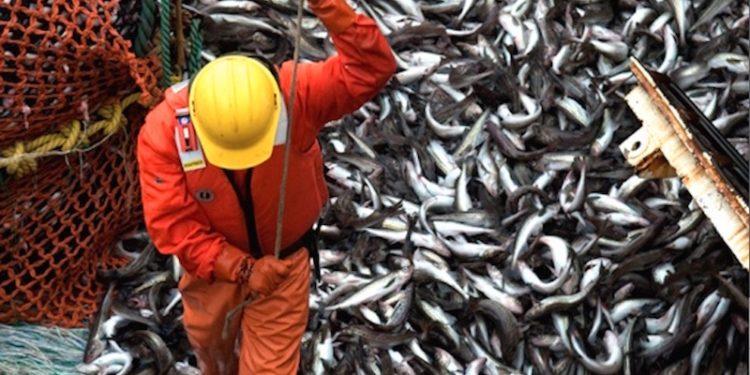Russian landings as a whole so far this year have totalled more than 3.5 million tonnes, which includes production of 64,000 tonnes of freshwater fish, according to the Fisheries Monitoring and Communication Monitoring Centre, which puts the current figures as being 4000 (+0.5%) tonnes up on last year’s.
In the Far East region, catches have so far (as of 20th September) come to 2,465.900 tonnes, which is a drop of 11,100 tonnes compared to year, due to a decrease in the production of herring and squid in the Bering Sea. Alaska pollock was up 16,000 thousand tonnes to 1,441,500 tonnes.
In the Northern region, the catch increased by 7,900 thousand tonnes to 443,400 tonnes, including a 323,000 tonne cod fishery and an 81,300 tonne haddock fishery that has down 8700 tonnes as fishing effort has been redistributed.
The Baltic catch came to 54,500 tonnes, a slight decrease on last year’s figures, and this includes a 30,700 tonne sprat fishery while Baltic herring landings have dropped by 2600 tonnes to 15,800 tonnes.
The Azov-Black Sea fishery totalled 59,300 tonnes, as 12,700 tonne drop due to the falling abundance of sprat and other species, while there was an increase in anchovy landings. In the Caspian Sea both the sprat fishery and freshwater fisheries declined, while overall production increased due to freshwater aquaculture.
Catches in EEZs of other nations have come to 319,700 tonnes this year, an increase of 25,800 tonnes due mainly to landings from Moroccan waters, while in international waters the Russian fleet accounted for 228,900 tonnes. This is an increase of 13,000 tonnes, attributed to increased allocations in waters managed by NEAFC and other RFMOs.









